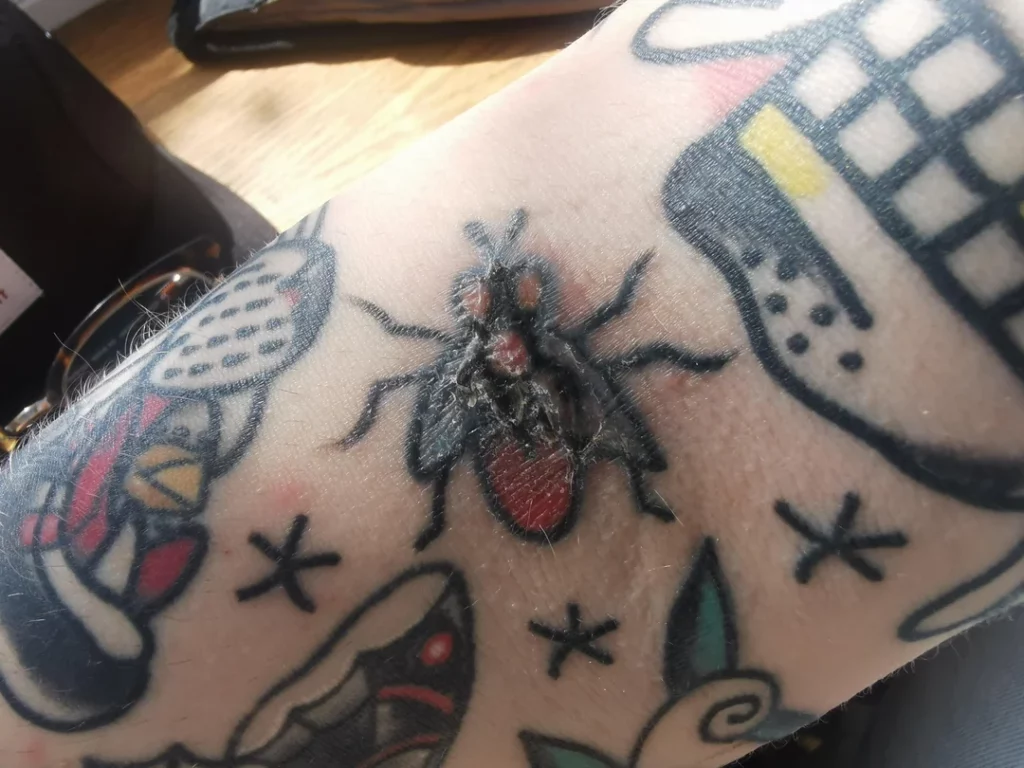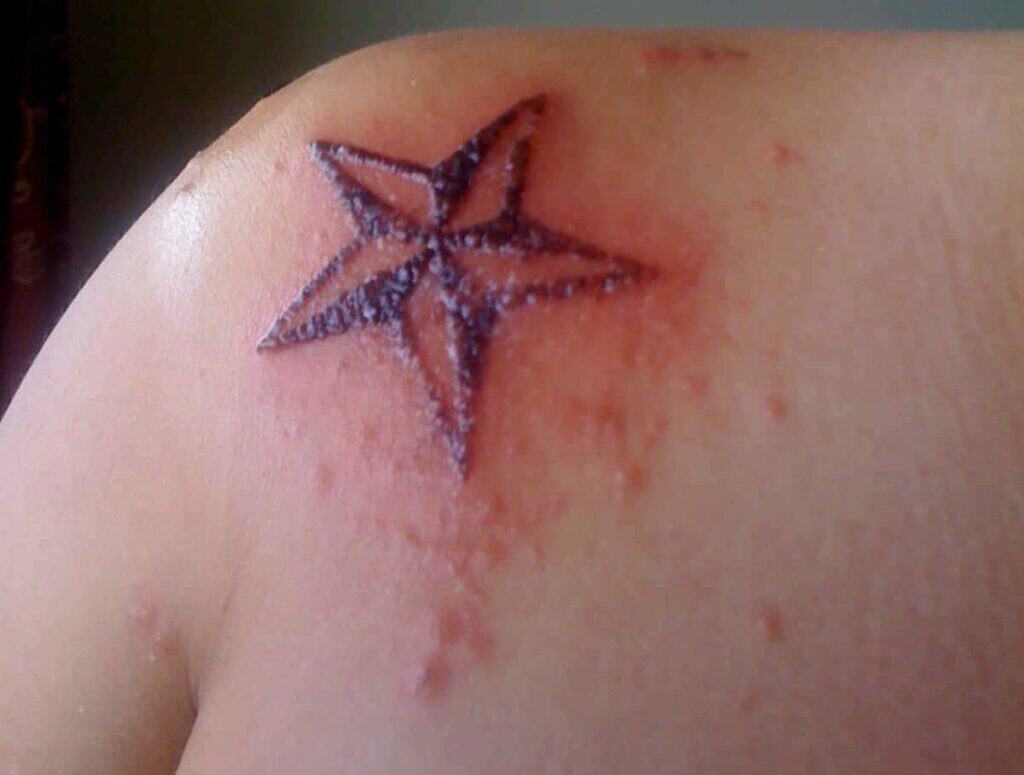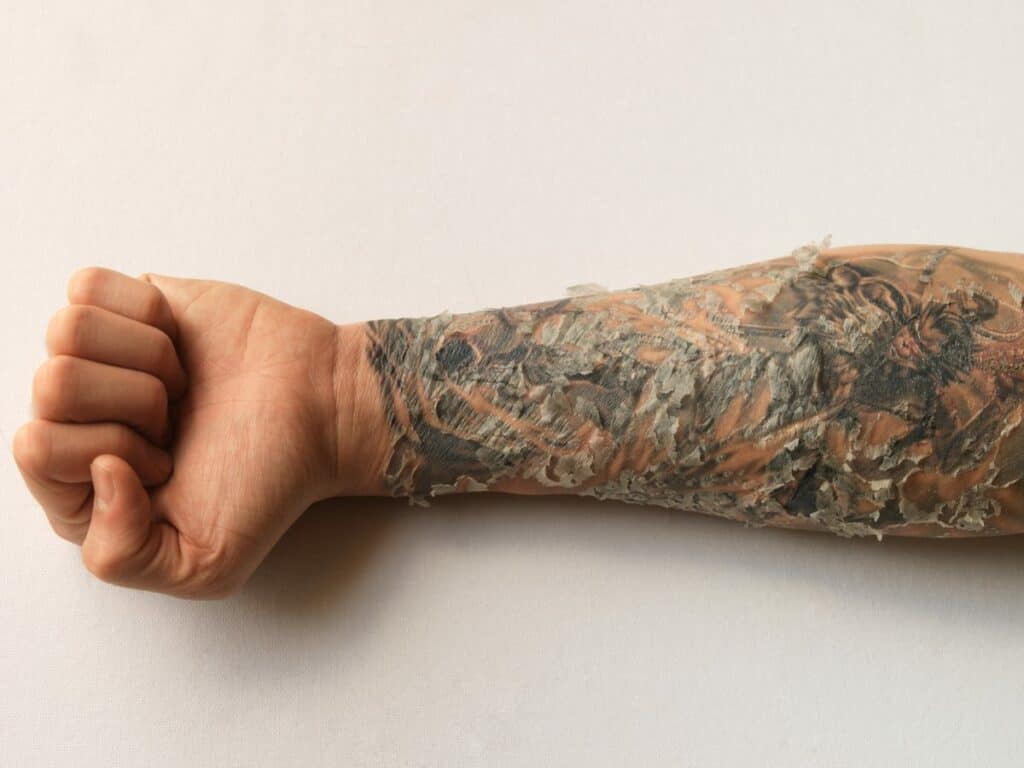Tattoo Healing Process: Understanding the Patience and Care

Getting a tattoo is an exciting and transformative experience, but it’s essential to remember that the process doesn’t end once the tattoo artist’s needle stops buzzing. The healing journey is just beginning, and understanding how long it takes for a tattoo to heal is crucial for ensuring optimal results. In this article, we’ll explore the various stages of the tattoo healing process, from the initial days of redness and swelling to the final settling of the ink into your skin’s canvas. By delving into the intricacies of tattoo healing, you’ll gain a deeper appreciation for the patience and care required to nurture your new ink to its full potential.
The Immediate Aftermath: Redness, Swelling, and Sensitivity

Image source: https://removery.com/wp-content/uploads/2022/01/tattoo-allergy-3-e1636565546907.jpg
After getting inked, your skin will undergo immediate physiological changes as it responds to the trauma of the tattooing process. Expect to see redness, swelling, and tenderness around the tattooed area, accompanied by a slight throbbing sensation. This initial inflammatory response is entirely normal and is your body’s natural way of initiating the healing process. The intensity of these symptoms can vary depending on factors such as tattoo size, location, and individual pain tolerance.
During this stage, your tattoo artist will likely cover the freshly inked design with a protective bandage or wrap to shield it from external contaminants and friction. It’s essential to follow your artist’s aftercare instructions diligently during this period to minimize the risk of infection and promote optimal healing. Keep the tattoo clean, dry, and protected from excessive moisture and sun exposure to ensure a smooth transition to the next phase of healing.
Forming Scabs and Peeling: The Regenerative Phase

Image source: https://authoritytattoo.com/wp-content/uploads/2020/11/peeling-tattoo.jpg
As the initial inflammation subsides, your skin will begin to form a thin layer of scabs over the tattooed area, accompanied by peeling and flaking. This stage typically occurs within the first few days to a week after getting tattooed and marks the beginning of the regenerative phase of healing. The scabs serve as a protective barrier, shielding the underlying layers of skin as they undergo repair and regeneration.
It’s crucial to resist the urge to pick, scratch, or peel the scabs, as this can disrupt the healing process and lead to scarring or pigment loss. Instead, focus on gentle cleansing and moisturizing to keep the tattooed area hydrated and promote healthy skin regeneration. Avoid exposing your tattoo to excessive moisture, such as soaking in baths or swimming pools, as this can soften the scabs and prolong the healing process.
Settling into the Skin: Fading of Scabs and Itching
As the days progress, you’ll notice the gradual fading and flaking of the scabs, revealing the vibrant colors and crisp lines of your tattoo beneath. This stage is often accompanied by itching, which can be intense and persistent at times. While it can be tempting to scratch or rub the itchy area, it’s essential to refrain from doing so, as this can cause damage to the delicate skin and compromise the integrity of your tattoo.
Instead, alleviate itching by gently tapping or patting the tattooed area or applying a cold compress to soothe the skin. You can also moisturize the tattoo with a fragrance-free lotion or ointment to help relieve dryness and reduce itching. Be patient during this stage, as itching is a normal part of the healing process and will eventually subside as your tattoo continues to settle into your skin.
Finalizing the Healing: Patience and Persistence
As the last remnants of scabbing and itching fade away, your tattoo will enter the final stage of healing, where it will continue to mature and settle into your skin’s natural texture and tone. This phase can take several weeks to months to complete, depending on factors such as tattoo size, complexity, and individual healing factors.
During this time, continue to practice good tattoo aftercare habits, such as moisturizing regularly and protecting your tattoo from sun exposure. While your tattoo may appear healed on the surface, it’s essential to give it ample time to fully regenerate and integrate into your skin’s layers. Avoid rushing the process or exposing your tattoo to harsh chemicals or abrasive treatments that could disrupt the delicate balance of healing.
Enjoying the Fruits of Your Patience: Admiring Your Ink

Image source: https://hips.hearstapps.com/hmg-prod.s3.amazonaws.com/images/tattoo-care-tips-1564065454.jpg
Once your tattoo has fully healed, take a moment to admire the beautiful work of art adorning your skin. Your patience and diligence throughout the healing process have paid off, resulting in a vibrant and long-lasting tattoo that reflects your unique style and personality. Remember to continue caring for your tattoo with regular moisturizing and sun protection to preserve its appearance and integrity for years to come. And most importantly, wear your ink with pride, knowing that it’s a testament to your journey, identity, and self-expression.
